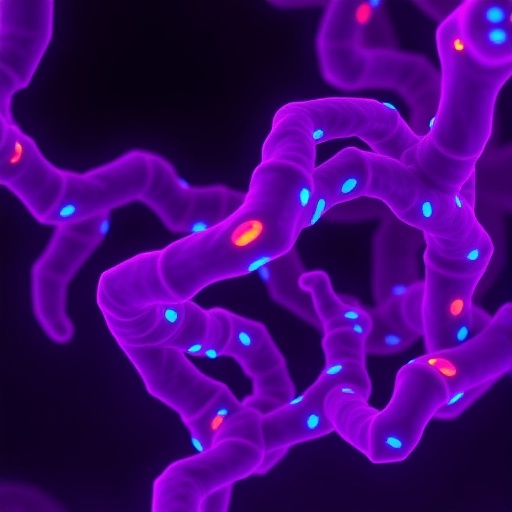Recent research has unveiled promising findings related to reproductive health, particularly concerning the cryopreservation processes of ovarian tissues. Researchers led by Jia, M., Zhang, R., and Ma, X. have conducted a study aimed at exploring the protective effects of glutathione supplementation during ovarian tissue vitrification and subsequent autologous transplantation. Vitrification, a form of cryopreservation, is crucial in preserving ovarian tissues for future reproductive use. The implications of this research extend far beyond the laboratory, offering hope for individuals facing fertility challenges.
Ovarian tissue vitrification has emerged as a game-changing technique in the field of reproductive medicine, allowing for the preservation of ovarian function in women who may undergo medical treatments that could compromise their fertility. However, the overall success of this technique largely depends on the viability of the ovarian tissue post-thawing and its ability to function effectively after transplantation. This study introduces a compelling method of enhancing tissue viability through the incorporation of glutathione, a potent antioxidant known for its protective properties against cellular stress.
Glutathione supplementation not only plays a crucial role in cellular defense against reactive oxygen species but also improves the overall health of the cells within the ovarian tissue. The study’s findings suggest that this antioxidant could mitigate the cytotoxic effects often associated with the freezing and thawing process. By fortifying the ovarian tissue with glutathione prior to vitrification, researchers have demonstrated significant improvements in the preservation of tissue integrity and functionality upon thawing.
A primary focal point of this investigation was the evaluation of histopathological changes within the ovarian tissues subjected to vitrification. The study meticulously examined sections of ovarian tissues for signs of cellular damage, structural integrity, and follicular viability. Results indicated that glutathione supplementation resulted in markedly reduced signs of osmotic stress and tissue architecture disruption, leading to a higher proportion of healthy follicles post-thaw. These outcomes are instrumental for advancing methodologies in reproductive biomedicine.
Moreover, researchers assessed the functional outcomes of the ovary-tissues post-transplantation in murine models. Beyond histological evaluations, the study also emphasized the importance of functional fertility assessments subsequently. The findings revealed that ovarian tissues supplemented with glutathione not only exhibited better anatomical integrity but also maintained significant hormone production levels, suggesting a viable pathway for successful fertility restoration in the recipients.
One of the study’s key implications is the potential for translating these findings into clinical practice, particularly in the fields of fertility preservation and restoration. The two-step approach, utilizing glutathione supplementation prior to vitrification, could revolutionize existing protocols in reproductive medicine. For women facing premature ovarian failure or those at risk of losing ovarian function due to medical interventions, this research provides a glimmer of hope for preserving reproductive potential.
In addition to the clinical implications, this research underscores the paramount importance of antioxidants in tissue preservation techniques. It raises critical questions regarding optimal supplementation strategies and dosing paradigms that could maximize graft survival and function. The potential application of glutathione, both in cryobiology and regenerative medicine, highlights an emerging field of research in enhancing cell and tissue viability during preservation.
The innovative approach taken in this study has sparked discussions within the scientific community regarding the utility of antioxidants in various fields beyond reproductive health. From organ transplantation to cellular therapies, understanding the mechanisms by which these antioxidants operate can lead to broader applications and improved outcomes for patients requiring tissue preservation.
While the findings are promising, it is essential to recognize the need for further studies to assess the long-term impacts of glutathione supplementation on ovarian tissues. Continuous observations and evaluations are required to ascertain the effectiveness and safety of this approach in both preclinical and clinical settings. As the research landscape continues to evolve, the contributions from studies such as this one pave the way for future innovations in reproductive healthcare.
As we stand at the precipice of advancing reproductive technologies, studies like these offer invaluable insights into optimizing cryopreservation techniques. They beckon us to rethink current methodologies and encourage the exploration of new realms in antioxidant research. The potential to harness the protective properties of substances like glutathione could significantly enhance the field of reproductive sciences, fulfilling the aspirations of countless patients seeking to preserve their fertility.
In summary, the exploration of glutathione supplementation in the context of ovarian tissue vitrification represents a significant advancement in reproductive medicine. It not only enhances tissue viability but also holds the potential for restoring fertility in women who confront the perils of compromised ovarian function. Further research will undoubtedly clarify the broader implications and applications of these findings, marking a pivotal moment in the journey toward fertility preservation and restoration techniques.
Subject of Research: Protective Effect of Glutathione Supplementation on Mouse Ovarian Tissue Vitrification and Autologous Transplantation
Article Title: Protective Effect of Glutathione Supplementation On Mouse Ovarian Tissue Vitrification and Autologous Transplantation
Article References:
Jia, M., Zhang, R., Ma, X. et al. Protective Effect of Glutathione Supplementation On Mouse Ovarian Tissue Vitrification and Autologous Transplantation.
Reprod. Sci. (2025). https://doi.org/10.1007/s43032-025-02012-4
Image Credits: AI Generated
DOI: https://doi.org/10.1007/s43032-025-02012-4
Keywords: Glutathione, ovarian tissue, vitrification, autologous transplantation, reproductive health, cryopreservation, antioxidants.




